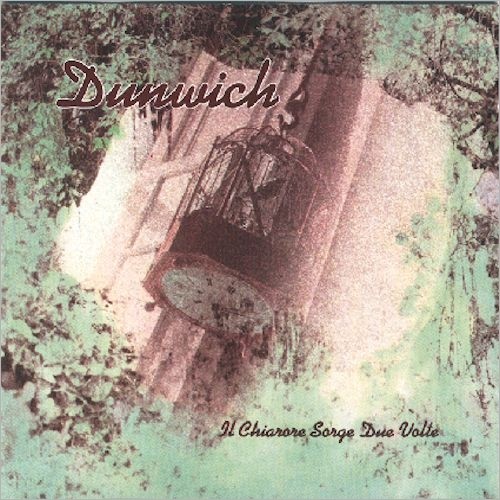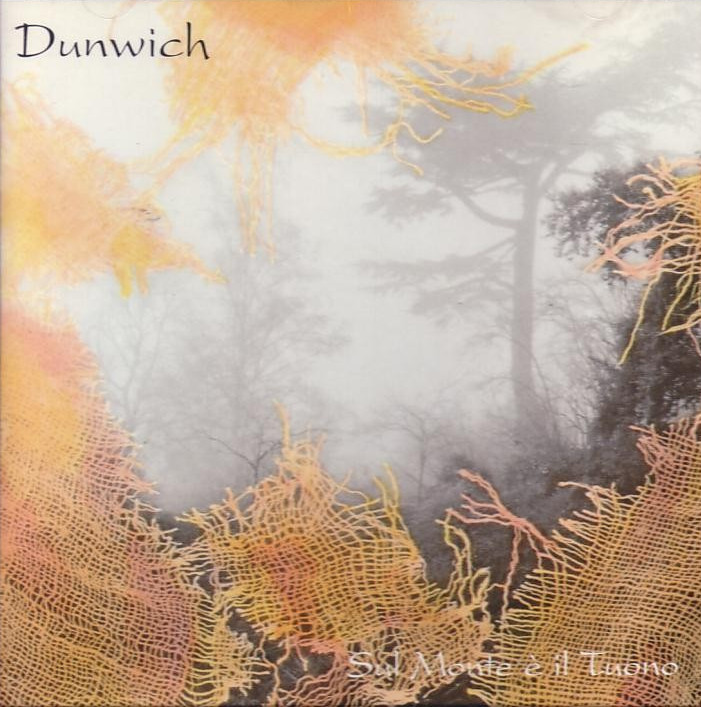
Exposé Online
What's old
Exposé print issues (1993-2011)
- 1 (October 1993)
- 2 (February 1994)
- 3 (May 1994)
- 4 (August 1994)
- 5 (October 1994)
- 6 (March 1995)
- 7 (July 1995)
- 8 (November 1995)
- 9 (March 1996)
- 10 (August 1996)
- 11 (February 1997)
- 12 (May 1997)
- 13 (October 1997)
- 14 (February 1998)
- 15 (July 1998)
- 16 (January 1999)
- 17 (April 1999)
- 18 (November 1999)
- 19 (May 2000)
- 20 (October 2000)
- 21 (March 2001)
- 22 (July 2001)
- 23 (December 2001)
- 24 (April 2002)
- 25 (September 2002)
- 26 (February 2003)
- 27 (August 2003)
- 28 (December 2003)
- 29 (April 2004)
- 30 (September 2004)
- 31 (March 2005)
- 32 (September 2005)
- 33 (May 2006)
- 34 (March 2007)
- 35 (January 2008)
- 36 (October 2008)
- 37 (July 2009)
- 38 (July 2010)
- 39 (Summer 2011)
Reviews
Dunwich — Il Chiarore Sorge Due Volte
(Pick Up PKPROG 1903, 1995, CD)
Dunwich — Sul Monte e il Tuono
(Black Widow BWRCD 005-2, 1994, CD)
by Peter Thelen, Published 1996-03-01


Sometimes one gets totally caught off guard. I'd hadn't even heard of this excellent band before I received a promo of their latest Il Chiarore Sorge Due Volte. Further investigation turned up an earlier album on Black Widow, which may have been released as an LP first, as the CD contains one bonus track. Where to begin? The basic band is a three-piece of keyboards, electronic percussion and female voice. They are augmented by numerous guest musicians playing guitars, bass, violin, and piano, and on the later album add cello, psaltery, lute, darbouka, bodhran, viola da gamba, various flutes, mandolin, Celtic harp, and much more. It gets even more interesting. At the center of the music is Katya Sanna's positively amazing voice, doing medieval-sounding multi-part harmonies with herself, as well as all backing voices; the vocals are really quite beautiful and haunting. The music varies between a heavy and soft symphonic, light and airy to dark and foreboding. At its most dense moments, buzzing metal guitars churn with bass and percussion in an apocalyptic metal maelstrom, while Katya's wispy voicings occupy the upper strata. At the opposite end there are simply voice arrangements with a minimal amount of instrumental accompaniment. For the later album a full string quartet and the employment of a variety of authentic medieval instruments adds a slightly different, folkier character to many of the songs. For comparisons, one might cite Dead Can Dance, Enya, 3rd and the Mortal, or Revolutionary Army of the Infant Jesus – yet Dunwich's vision seems to be on a much grander scale than any of those bands. The chief difference between the albums seems to be more a function of the variety of instruments available than any difference in basic style or direction: the earlier album tends to have a bit more of a rock crunch at the bottom, while the later has a wider variety of sounds to draw upon. Probably start with the second – if you like it you'll certainly want to get the first.
Filed under: New releases, Issue 9, 1995 releases, 1994 releases
Related artist(s): Dunwich
What's new
These are the most recent changes made to artists, releases, and articles.
- Review: Olly Chalk - In Those Remote Stars
Published 2026-01-17 - Review: Jeff Pearce - Infinite Ambient: Winter Landscapes
Published 2026-01-16 - Release: Nektar - Mission to Mars
Updated 2026-01-15 11:59:57 - Release: Mordecai Smyth - Gather the Scattered Mind
Updated 2026-01-15 11:52:38 - Review: Trio of Bloom - Trio of Bloom
Published 2026-01-15 - Review: Barry Cleveland & Robert Rich - Elliptical Passage
Published 2026-01-14 - Release: Orchestra of the Upper Atmosphere - θ2
Updated 2026-01-13 23:09:38 - Release: Orchestra of the Upper Atmosphere - θ3
Updated 2026-01-13 23:07:05 - Release: Orchestra of the Upper Atmosphere - θ6
Updated 2026-01-13 22:55:18 - Release: Orchestra of the Upper Atmosphere - θ5
Updated 2026-01-13 22:52:03 - Release: Orchestra of the Upper Atmosphere - θ4
Updated 2026-01-13 22:47:05 - Release: Barry Schrader - Ambient : Aether
Updated 2026-01-13 22:29:29 - Review: Trinary System - The Hard Machine
Published 2026-01-13 - Release: Camahueto - Reflejos
Updated 2026-01-12 23:44:45 - Artist: Camahueto
Updated 2026-01-12 23:41:18 - Release: Danza de la Ira - Septies Kairos
Updated 2026-01-12 23:03:00 - Artist: Danza de la Ira
Updated 2026-01-12 22:56:20 - Release: Orchestra of the Upper Atmosphere - Orchestra of the Upper Atmosphere
Updated 2026-01-12 16:14:44 - Release: Orchestra of the Upper Atmosphere - θ7
Updated 2026-01-12 16:13:34 - Artist: Orchestra of the Upper Atmosphere
Updated 2026-01-12 16:12:18
